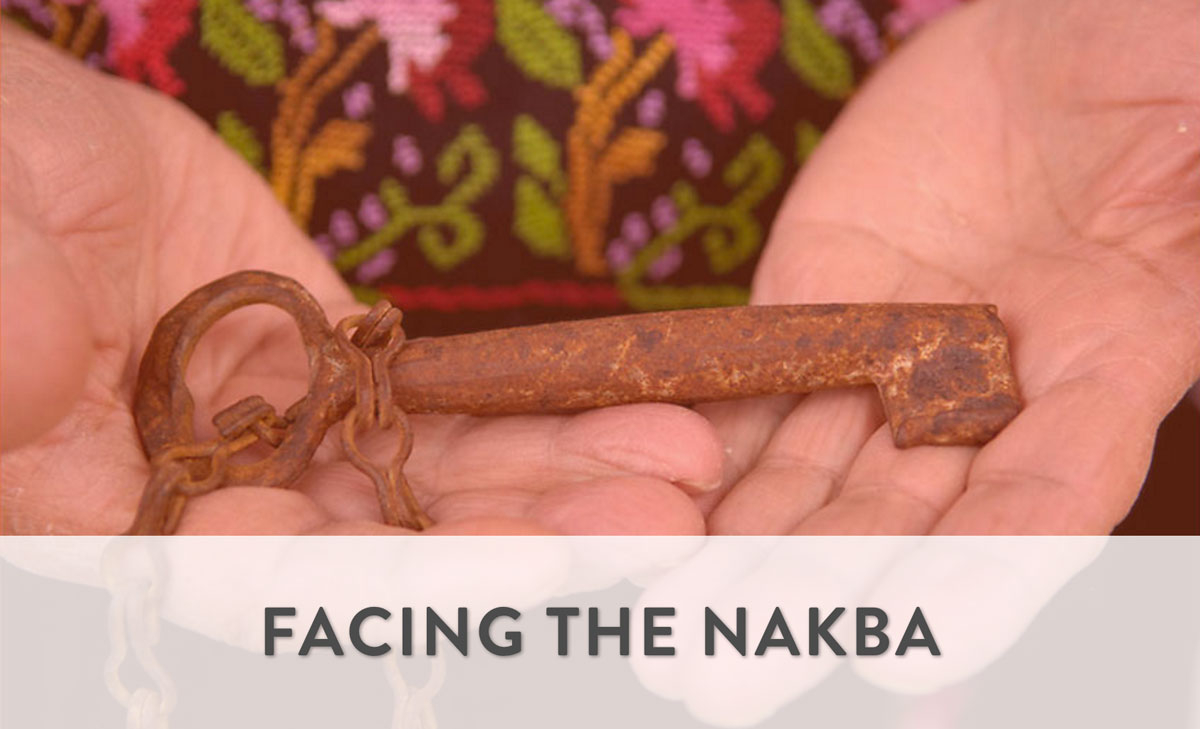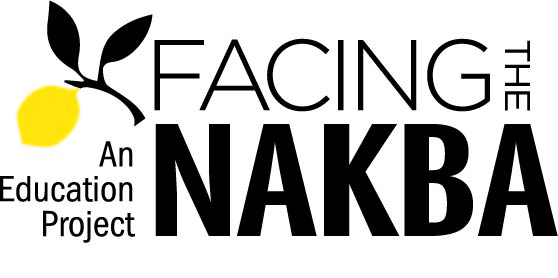We must stop U.S. support for Israel's genocide.
Facing The Nakba Curriculum

Facing the Nakba offers educational resources to U.S. Jews and a general U.S. audience about the history of the Nakba (“Catastrophe” in Arabic) and its present implications in Palestine/Israel. The Nakba refers to the forced displacement of approximately 750,000 Palestinians that began with Israel’s establishment, and that continues to this day.
Curriculum
Our seven-session curriculum offers an opportunity to learn about what happened before and during 1948, to look at the ongoing effects of the Nakba, and to understand why and how that story is elided in U.S. conversations. We’ve also developed an in-depth guide for facilitators and recommended tracks—in synagogues or on college campuses, among organizers or high school students, we want the curriculum to work for you.
Summary of Session 1: Introduction
In the first session, we welcome the group, introduce participants to the sessions, set community agreements, and start to explore the Nakba.
Total time: 1 hour
Materials:
- Whiteboard/chart paper/markers
- Video equipment with Internet connection
- Notebooks/paper/pen
- Designated chart paper/whiteboard space for ongoing group reflections
Summary of Session 2: Encountering the Nakba
In this session, we help participants understand their personal relationship to the Nakba, explore why we don’t know about the Nakba, and start to uncover where to look for that history through a slideshow and “found documents” activity using primary sources from 1948.
Total Time: 1.5-2 hours
Materials:
- Pens/markers (enough for participants)
- Paper/chart paper
- Internet connection
- Computer/projector
- Reflection questions on chart paper or computer/projector
- Encountering the Nakba slideshow
- Encountering the Nakba slideshow notes
- Printed images and descriptions for the museum gallery walk
- Found Documents Activity Kit materials printed (see activity for more details)
- “Common Early Understandings” from Session 1
Summary of Session 3: The Nakba in History
Through a slideshow/presentation of information, we present an historical overview of the Nakba: Palestinian life before the Nakba, the relationship between Jews and Palestinians, the impact of the Nakba in numbers, the UN Partition Plan, and the various reasons Palestinians left their villages in 1947-48. Through group discussion, we ask the question, “How did we get here?” and develop a deeper understanding of historical context.
Total time: 1.5-2 hours
Materials:
- Pens/markers (enough for participants)
- Paper/chart paper
- Internet connection
- Computer/projector
- Reflection questions on chart paper
- The Nakba in History PowerPoint
- The Nakba in History printouts for 4 groups:
Summary of Session 4: Testimony
In this session we see and hear testimonies from Palestinians describing what life was like before and during 1948. We ask what “testimony” means, and examine how we feel when we hear people tell what happened during the Nakba. We may use academic texts, concepts, and empirical research to understand testimonies, but our focus is first and foremost on the personal experience and process.
Total time: 1.5 hours
Materials:
- Pens/markers
- Paper/chart paper
- Internet connection
- Computer/projector
- Testimony concepts written and displayed/hung around the room
- Reflection questions on chart paper/computer screen
Summary of Session 5: In the Archives
This session includes close reading and discussion in small groups to give time for participants to reflect on some of the information they have encountered in the previous sessions. Close readings and examinations will be of: the Israeli Declaration of Independence, Plan Dalet, a testimony of a Palmach soldier, and the poems “I Belong There” and “There Was No Farewell.” Participants see what primary texts and documents can and cannot tell us about the Nakba. We place different versions of history in conversation with “official history,” to see where they differ and how we can interpret that conflict.
Total time: 1.5-2 hours
Materials:
- Pens/markers
- Paper/chart paper
- Internet connection
- Computer/projector
- Reflection questions on chart paper/computer screen
- Copies of texts in the Round Robin for participants at each station
- Notecards for each station
Summary of Session 6: The Right of Return
Participants transition from learning about the history of the Nakba in previous workshops to thinking about the ongoing effects of the Nakba. In this session, we look at who the Palestinian refugees are under international law and consider a range of views regarding how they might be included to ensure a peaceful, just resolution.
Total time: 1.5-2 hours
Materials:
- Whiteboard/chart paper/markers
- Video equipment with Internet connection
- Graphs on Palestinian refugees
- Map and informational posters to hang around the room
- Reflection questions on chart paper/computer screen
Summary of Session 7: Forms of Resistance
In this session, we reflect further on how the Nakba impacts Palestinian life now and begin to explore both art and the Boycott, Divestment, Sanctions (BDS) movement as acts of peaceful resistance in Palestine. We also reflect on the seven sessions as a whole and how we want to transform what we’ve learned into action.
Total time: 2-2.5 hours
Materials:
- Whiteboard/chart paper/markers
- Video equipment with Internet connection
- Palestine Poster Project posters
- Powerful visuals from previous sessions
- Colored construction paper
- Poster board for Mosaic project
- “What is BDS?” webpage
Facilitator Guide
In our general guidelines for facilitators, we provide an overview of the project and the curriculum sessions and highlight tips for facilitation of these materials through common challenges and scenarios. Download Guide
Recommended Tracks
These flexible tracks are recommended to facilitators who are interested in choosing from suggested activities and readings based on the specific interests and backgrounds of their participants, and who may not have time to do complete sessions from the curriculum. Facilitators can select among the exercises from these tracks to create the workshop or class session most relevant to their participants—highlighted here are recommendations for an introduction to the Nakba, a high school class, a college course, an activist/organizers group, a group that identifies as liberal Zionist, and a synagogue or adult education course. Download Tracks
Bibliography
The Facing the Nakba curriculum draws from a variety of different readings, films, primary sources, and other materials. Through the generosity of Zochrot, much of our curriculum was developed from the original study guide, “How do you say Nakba in Hebrew?,” translated into English. To learn more, view the sources used in our seven-session curriculum in the bibliography. For additional supplementary resources, check out our library. Download Bibliography
Library
As educators and activists, we have seen how acknowledgement of the Nakba can deepen discussions of the history of Palestine, Israel, and the occupation. But acknowledgement is just the first step. Use this resource library to learn more about the history and current reality of the Nakba, and to strengthen conversations about the possibility for justice in Palestine/Israel.
Explore Resources
Get
the Wire
Stay up to date on the most important news from Palestine and the Palestine solidarity movement, and receive action alerts and invitations to online events.
